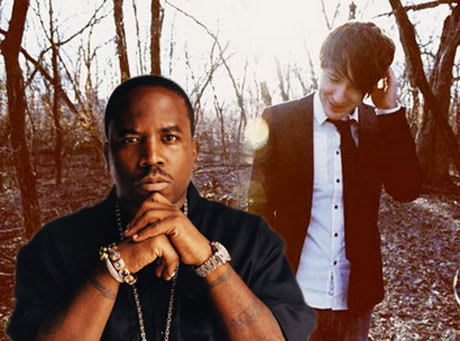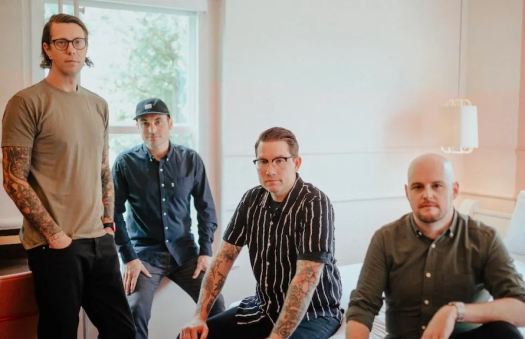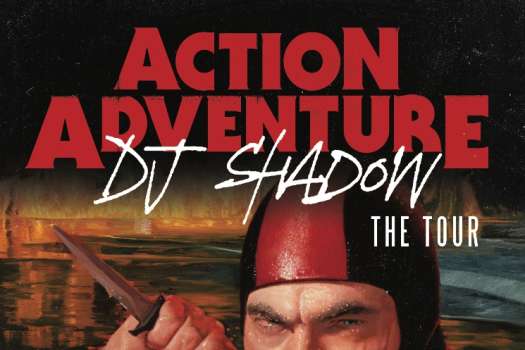Over the last few years, UK-based label Modern Love has been one of the most consistent outlets for forward-thinking electronic music. Andy Stott's follow-up to 2011's Passed Me By and We Stay Together EPs continues this trend. Luxury Problems is a highly impressive full-length album of dark, atmospheric techno. Five of the eight tracks feature vocals from Stott's one-time piano teacher, Alison Skidmore. As a result, Luxury Problems finds Stott treading previously uncharted sampling territory; he creates droning cuts and loops of Alison's vocals in a similar style to those of ambient veteran Bvdub, blending them with heavily filtered, spaced-out industrial beats, similar to those heard on his previous EPs. While the album still retains an undeniably "Stott" sound, Andy also explores a variety of broader musical styles, even venturing into Aphex Twin-esque drum & bass patterns.
You have a very distinctive, dark sound. Is this something you intentionally aim to create as soon as you sit down to make a piece of music or is it a characteristic that develops unintentionally as you work?
I suppose that's about where I'm at right now; I don't sit down and think beforehand, "this track is going to turn out like this." The tracks end up the way they do just because they don't sound right to me any other way. You could say it is a kind of a development, but I kind of know what I want.
In what ways would you say Luxury Problems differs from your previous releases?
Well, the main difference is the use of the vocals and also, to me, it's not as dense as the previous two releases, although it does emit the same feeling when you dig a bit deeper. It's more of a controlled release compared to Passed Me By and We Stay Together. Within the same approach to all the tracks there are different styles on the album to get your head around.
Can you describe your creative process in working with Alison Skidmore? How did her vocals come to play such a large role on Luxury Problems?
It was really easy working with Alison. I know from being taught the piano by Alison that she has a really good ear for all music and when the suggestion came to me to work with a vocalist, I had no one else in mind. I asked Alison if she was up for the project and luckily she was. I told her to just record whatever comes to her — no rules, no real plan, just send me what you feel is right. I remember getting the first batch of vocals from her and was blown away, so then it was a case of files just bouncing back and forth.
The album art was included in a "best album covers" list by Juno. All of the album art for the releases on Modern Love have a similar aesthetic. Do you think there are any artistic parallels between the music the label releases and the art selected to go with it?
I think the artwork has a strong thread linked with the material throughout the label, not just with my releases. It's one of the most exciting parts, for me, to see what's going to describe my music visually. So far, so very good!
What is it like to work within the Modern Love community?
I can't begin to imagine working elsewhere! Imagine doing what you have always wanted to do and just working with your friends — that's how it basically works. I feel like I have total freedom in what I can hand into the label. For example, we did a series of '90- to '92-style hardcore called HATE that I did with Miles Whittaker and Gary Howell [Pendle Coven], and also the Millie and Andrea project, which I did with Miles [Demdike Stare, Pendle Coven, Mlz, Miles]. The support from the label and labelmates has built something really special and unique. Miles is also my default technical support emergency call [laughs].
Can you describe your live performances?
That all depends on where I'm playing, but basically at the moment they are pretty much similar to the new material: dark, pounding and intense. For the live shows, I do knock it up a notch or six; it gives you the opportunity to try out new ideas you're working on and see how people respond. Thinking about the last sets, it's not unusual [for me] to start in the 70-bpm region and finish up at the 140-bpm HATE material. But it all depends on how the music is going down on the night that makes the set what it is.
How do audiences typically react to an Andy Stott live set?
I have been getting great reactions lately; I'm so lucky that the audiences I have played in front of have just gone with me from beginning to end. Even right at the beginning of the show, when I have looked up I can see people getting into it immediately, which gives you a great amount of confidence to experiment. I love that!
What do you hope people will take away from listening to your music?
Exactly the same feeling I got while writing these tracks, that's as simply as I could put it. Someone posted a picture recently on Twitter of when I played at the MoMA dome at PS1 of a lady walking out with her fingers in her ears. That's what we want [laughs].
What are your future ambitions, both musically and in your life as a whole?
Well, I'm in a funny and unusual place at the moment. My partner and I just had our baby boy and I just quit my day-job, so all of a sudden I have all this time to myself to spend writing and with the family. I'm still adjusting to this, so I haven't really given my future a thought. But I would like to keep stepping forward with my music, of course. I think so far it has been a slow but steady progression from one release to the next and that's the path I want to stay on. Obviously, with life in general, I just want everything to be good for the family; it really does give you new perspectives, which is really nice. Oh, and I want to get my Ford Mk1 Escort Mexico finished for the track!
You have a very distinctive, dark sound. Is this something you intentionally aim to create as soon as you sit down to make a piece of music or is it a characteristic that develops unintentionally as you work?
I suppose that's about where I'm at right now; I don't sit down and think beforehand, "this track is going to turn out like this." The tracks end up the way they do just because they don't sound right to me any other way. You could say it is a kind of a development, but I kind of know what I want.
In what ways would you say Luxury Problems differs from your previous releases?
Well, the main difference is the use of the vocals and also, to me, it's not as dense as the previous two releases, although it does emit the same feeling when you dig a bit deeper. It's more of a controlled release compared to Passed Me By and We Stay Together. Within the same approach to all the tracks there are different styles on the album to get your head around.
Can you describe your creative process in working with Alison Skidmore? How did her vocals come to play such a large role on Luxury Problems?
It was really easy working with Alison. I know from being taught the piano by Alison that she has a really good ear for all music and when the suggestion came to me to work with a vocalist, I had no one else in mind. I asked Alison if she was up for the project and luckily she was. I told her to just record whatever comes to her — no rules, no real plan, just send me what you feel is right. I remember getting the first batch of vocals from her and was blown away, so then it was a case of files just bouncing back and forth.
The album art was included in a "best album covers" list by Juno. All of the album art for the releases on Modern Love have a similar aesthetic. Do you think there are any artistic parallels between the music the label releases and the art selected to go with it?
I think the artwork has a strong thread linked with the material throughout the label, not just with my releases. It's one of the most exciting parts, for me, to see what's going to describe my music visually. So far, so very good!
What is it like to work within the Modern Love community?
I can't begin to imagine working elsewhere! Imagine doing what you have always wanted to do and just working with your friends — that's how it basically works. I feel like I have total freedom in what I can hand into the label. For example, we did a series of '90- to '92-style hardcore called HATE that I did with Miles Whittaker and Gary Howell [Pendle Coven], and also the Millie and Andrea project, which I did with Miles [Demdike Stare, Pendle Coven, Mlz, Miles]. The support from the label and labelmates has built something really special and unique. Miles is also my default technical support emergency call [laughs].
Can you describe your live performances?
That all depends on where I'm playing, but basically at the moment they are pretty much similar to the new material: dark, pounding and intense. For the live shows, I do knock it up a notch or six; it gives you the opportunity to try out new ideas you're working on and see how people respond. Thinking about the last sets, it's not unusual [for me] to start in the 70-bpm region and finish up at the 140-bpm HATE material. But it all depends on how the music is going down on the night that makes the set what it is.
How do audiences typically react to an Andy Stott live set?
I have been getting great reactions lately; I'm so lucky that the audiences I have played in front of have just gone with me from beginning to end. Even right at the beginning of the show, when I have looked up I can see people getting into it immediately, which gives you a great amount of confidence to experiment. I love that!
What do you hope people will take away from listening to your music?
Exactly the same feeling I got while writing these tracks, that's as simply as I could put it. Someone posted a picture recently on Twitter of when I played at the MoMA dome at PS1 of a lady walking out with her fingers in her ears. That's what we want [laughs].
What are your future ambitions, both musically and in your life as a whole?
Well, I'm in a funny and unusual place at the moment. My partner and I just had our baby boy and I just quit my day-job, so all of a sudden I have all this time to myself to spend writing and with the family. I'm still adjusting to this, so I haven't really given my future a thought. But I would like to keep stepping forward with my music, of course. I think so far it has been a slow but steady progression from one release to the next and that's the path I want to stay on. Obviously, with life in general, I just want everything to be good for the family; it really does give you new perspectives, which is really nice. Oh, and I want to get my Ford Mk1 Escort Mexico finished for the track!




